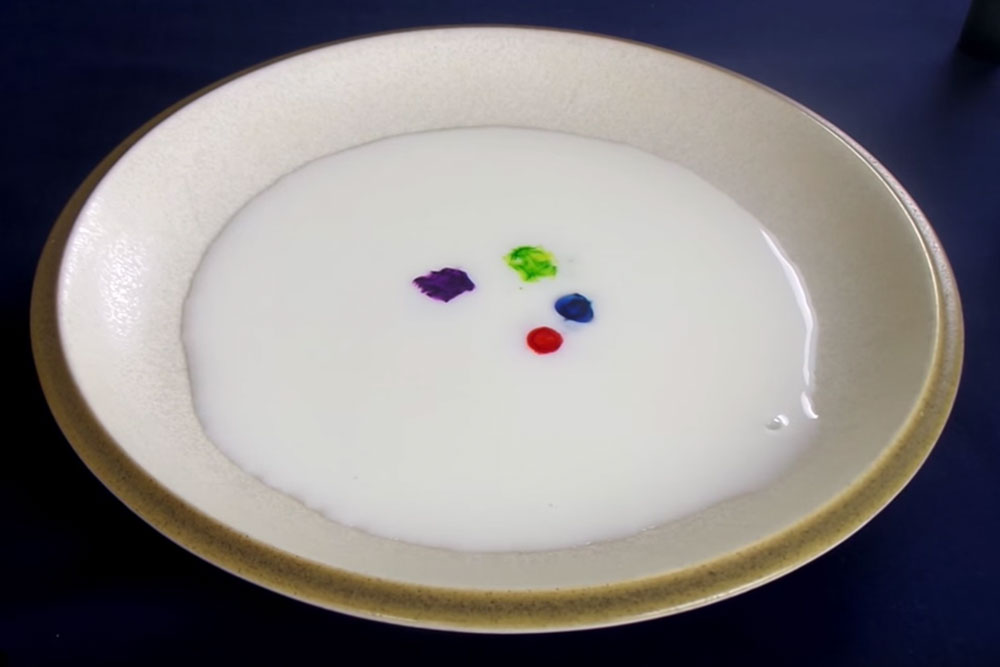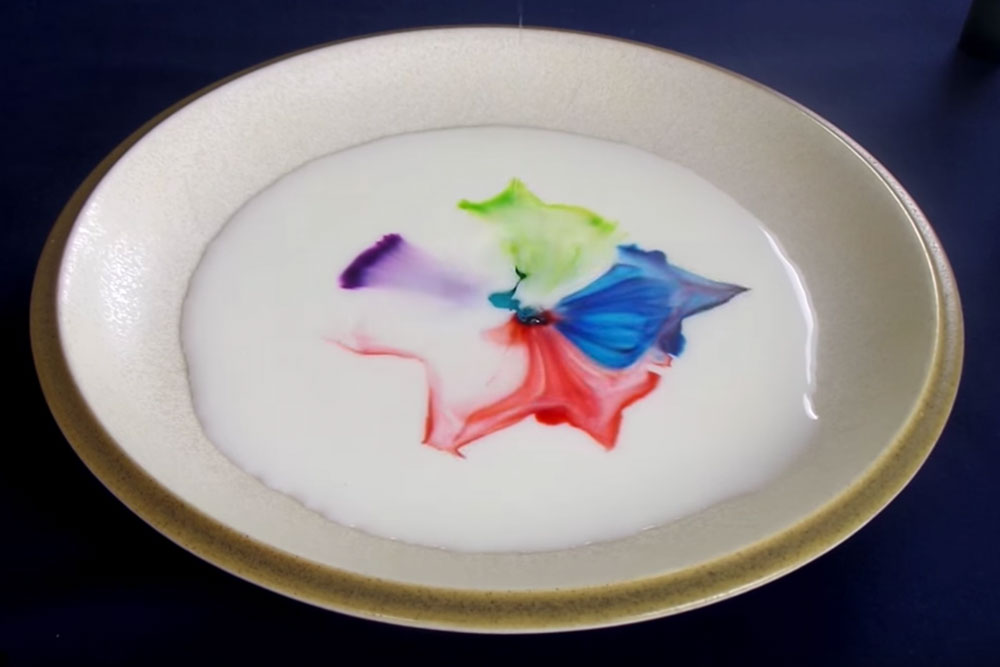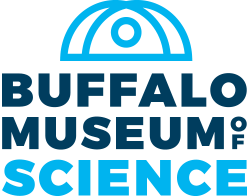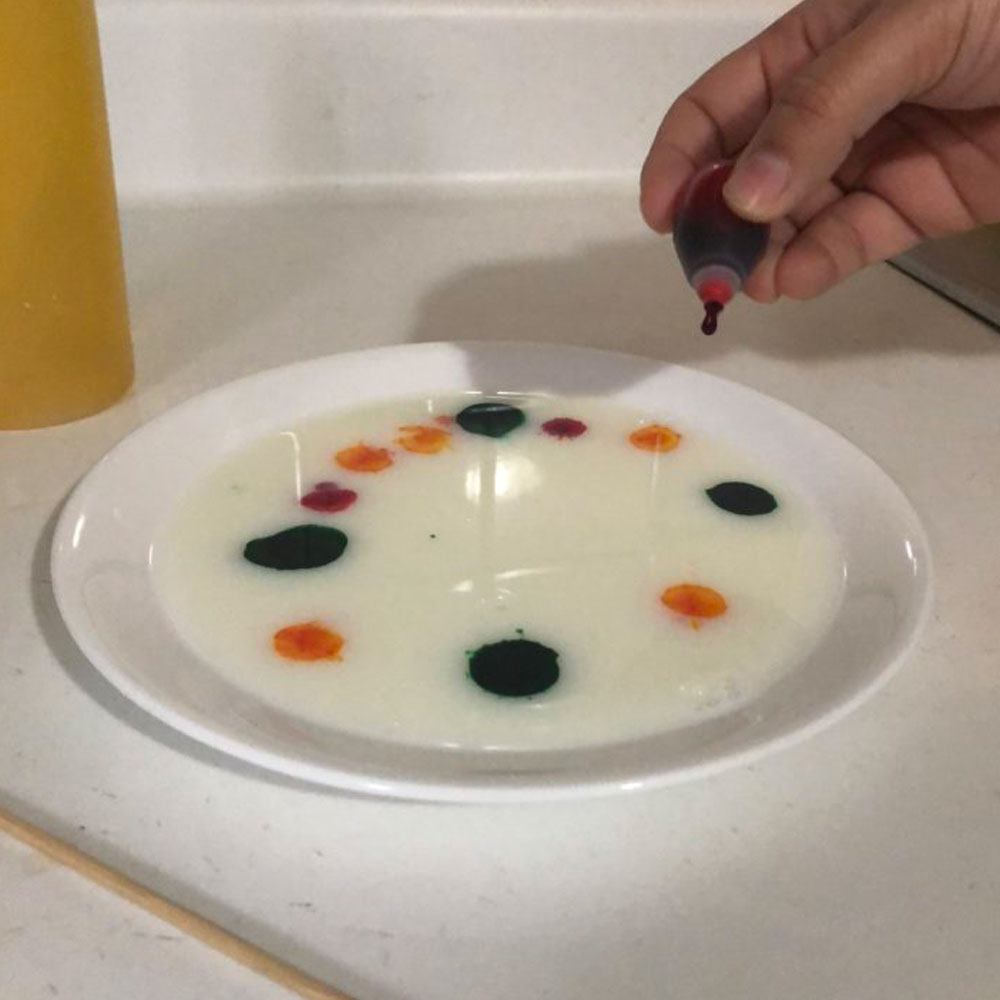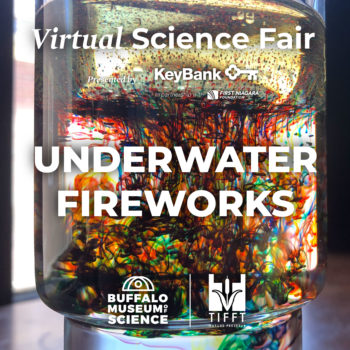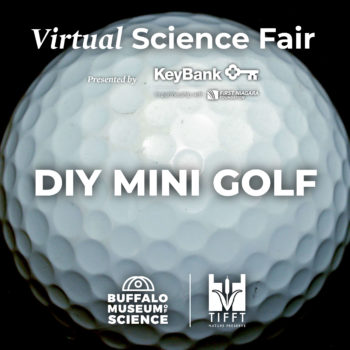Colorful Magical Milk
Have science fun as a family! Complete activities with parental supervision.
Materials:
- A plate
- Dish soap
- Food coloring
- Enough milk to cover the bottom of the plate by about 1/4 inch
- Toothpick, bamboo skewer or cotton swab
Procedure
- Pour milk into the plate. Be careful not to spill!
- Carefully, add a few drops of food coloring to the milk. Putting drops in a circle works well.
- Dip the toothpick/skewer/cotton swab into the soap, making sure a good amount of soap sticks to it.
- Place the stick soap-side down in the center of the plate (just dip, don’t stir!) and be prepared to be amazed! What happened? Can you figure out why?
- Be sure to take a picture or video to share in the Facebook comments on the Buffalo Museum of Science or Tifft Nature Preserve pages!
What’s it all about?
While milk is mostly made out of water, it contains a lot of fats or oils, known as lipids. Have you ever tried to wash fat (oil or butter) off your hands with just water? Does it work? What happens when you use soap? Soap works to clean because part of the soap (called micelles) are attracted to the lipids so it goes around and collects them. In this experiment, when you see the milk move, that is the micelles in action! When you wash with soap and water, the micelles collect all the lipids and they get washed down the drain.
This is the same reason why we are told to wash our hands with soap and water. The outermost layer of many things, including bacteria and viruses, is made up of lipids. By thoroughly washing with soap and water, we can break up the dirt, bacteria and viruses and wash them away!
Try It!
Mix it up! How can we change this into a real experiment? We can change a variable and hypothesize (guess) what will happen before we put in the soap.
Do other different types of soaps yield different results?
We used nonfat milk, but what would happen if you use 1%, 2% or whole milk?
What about other liquids? Do not use chemicals or cleaning agents.
Let us know what you try and discover!
